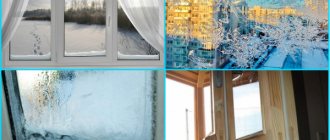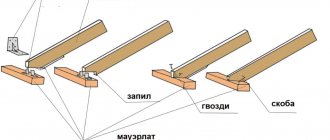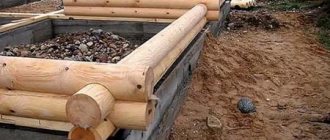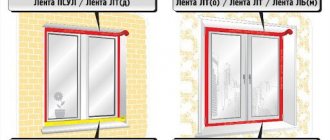(10th method) Insulation of the entire perimeter of the window frame
The whole process of insulating a wooden window consists of choosing the material for the work and the method of laying it, taking into account the characteristics of the wooden window. We mainly insulate the cracks, which are located at the junction of the frame and sashes.
If you are guided by Swedish technology, then you need a special tool - a cutter to make a groove inside the perimeter of the window and fill it with a tubular silicone seal that will cover all the smallest cracks and defects. The process is complex; if the window is old, it may not withstand removal and hanging; it is not cheap; the work must be performed by professionals.
An easier way is to place and glue the seal around the perimeter onto the transom of the window. When we close the frame, it will bend the seal and not slide over it; it will fit tightly, closing all the cracks. Such insulation can be laid in rows in several layers. Its use must be combined with the installation of glass on a layer of sealant. The seal installed in this way will last for many years and there will be no need to remove it in the spring and install it in the fall.
Some people continue to insulate their windows with toilet paper or newspapers. But today there are a sufficient number of specialized tools designed to make our everyday life easier. It’s worth mentioning right away: pasting windows is a regular process and it will be repeated every winter. Therefore, it is worth choosing the least labor-intensive method of insulation. In this article we will look at the types of insulation for self-adhesive windows. We will also compare the cost of different types of materials and provide step-by-step installation instructions using one example.
Any self-adhesive insulation always consists of two main elements:
- Warming base;
- Adhesive layer.
The first is designed, in fact, to protect from the cold, the second eliminates the need to dilute and use a special adhesive. This tape-based approach has three significant advantages over traditional methods:
- Reduces insulation installation time;
- Simplifies pasting;
- Eliminates wet processes.
And as a bonus, any adhesive will leave marks on the frame when the owner wants to get rid of the insulating tape. Using special adhesive tape for insulation will not cause diffusion between the frame paint and the adhesive composition of the insulation.
Let's now look at the 4 materials from which self-adhesive window seals are made, and discuss the advantages and disadvantages of each.
Installation
To install the seal, you do not need to have any specific knowledge or skills; just prepare the installation site and stick it on. You will need the following tools for installation.
- Penknife.
- Silicone glue gun (if a non-self-adhesive sealant is used).
- Silicone glue (if a non-self-adhesive seal is used).
- Alcohol or any other degreasing material.
- A piece of clean cloth.
After all the necessary things have been purchased, you can begin installing the sealing tape on wooden windows. This process consists of the following steps.
- It is necessary to open the windows and clear the installation site of dirt and debris.
- The cleaned installation site is degreased with alcohol or other means.
- If a self-adhesive seal is used, then it is necessary to remove part of the sewn-in film of the adhesive coating and glue part of the sealing material to the window frame. Gradually removing the sewn film from the seal, it is necessary to glue it around the perimeter. If the seal is not covered with adhesive, the pasting area must be coated with liquid silicone using a gun.
- The joints of excess material are cut off with a penknife.
After the entire gluing process is completed, you need to check how the window closes and whether there is an excess section of the seal. When choosing a material, it is not recommended to choose something much thicker than necessary, since there is a possibility that the door or window will not close. The seal can be installed either on the stationary part of the window or door or on the movable part, this will in no way affect the quality of the seal.
Types of insulating tapes and tape
Insulation sheets and tape have a number of advantages over other methods of window covering:
- The base will last for several years without replacement.
- Pasting is carried out independently, quickly.
- No additional materials are required.
- The adhesive base leaves no traces when peeled off and does not interact with the material to which it is glued.
But it is worth considering the disadvantages of this method:
- Covered openings cannot be opened.
- If the strip is poorly glued or of poor quality, then removal will be difficult and there will be tears.
There are two types of insulation sold in stores and markets:
- Pasting. This type has a lot of grip. Polyvinyl chloride, rubber raw materials, and foam rubber are used for its production. It has good flexibility and simply compresses to the required size. Stripes are available in black, white and brown colors. It is written on the packaging what size gap the fabric is suitable for.
- Sealing. This type is characterized by a void inside the tube, which helps retain heat. One side is equipped with an adhesive layer. The 7 mm gap is tightly blocked and can withstand all temperature changes. The color of the strip is chosen to match the color of the glass unit.
The durability of the glued tape must be checked annually. If replacement is required, then do it for the entire strip or a separate fragment.
Seals for preparing windows for winter
To prevent blowing through loose frame sashes, it is enough to insert a seal into the grooves or glue its analogue on an adhesive basis. Insulation without glue is also produced. They are cheaper, but choosing a retainer can leave you with some difficult choices. You can use silicone sealant, but it will leave marks and can remove paint from wooden frames.
A seal is a hollow tube that prevents heat from passing through the cracks due to the layer of air it contains.
Depending on the material, the tubes are
- rubber – grayish-white in color, moderately plastic, subject to damage by acids and alkalis, can peel off when exposed to water, last up to 3 years;
- silicone - pure white, elastic, do not react to chemical influences, perform their functions for up to 8 years in a row.
Window seal
Seals are secured at home in various ways.
- The adhesives are released from the protective film and pressed to the surface of the frame with an adhesive base.
- Tubes with a T- or Y-shaped longitudinal holder are inserted into the groove. This type of fastening is the most reliable and is not afraid of dampness.
- Tubular seals without an adhesive layer are glued to glue or silicone.
The protective film should be removed a few centimeters at a time so that dust and moisture do not get on the adhesive base. Be careful not to stretch the seal so that it does not “bounce” off the frame.
Even before the advent of tubular ones, foam rubber strips were produced, and they are still used to plug cracks. Foam rubber does not injure frames and is easy to use. The downside is insufficient reliability; with strong compression, it loses its heat-saving qualities.
Types of insulation
Tubular seal
To reduce heat loss through window structures, you can use several types of self-adhesive insulation. When choosing, temperature operating conditions are taken into account as one of the factors for the durability of the seal.
Also, special attention should be paid to the adhesive base. It must be suitable for installation on the specific material from which the window is made
Not all models are designed for installation on plastic or aluminum structures. But the determining parameter of choice remains the seal.
It can be of the following types:
Rubber. This is the cheapest and most accessible material, which has a number of disadvantages. First of all, the change in elasticity index when exposed to negative temperatures. It becomes rigid, which increases the likelihood of heat loss;
Foamed PVC. Even after significant deformation, it quickly returns to its original shape
When choosing, you need to pay attention to the stiffness indicator;
Foam rubber. The best option for sealing windows
Its porous structure contributes to a high degree of thermal insulation.
Window insulation using Swedish technology also has good reviews - you can check it out. After choosing the optimal seal model, it is necessary to perform correct installation.
Self-adhesive insulation
Insulation materials are divided into adhesive, groove and self-adhesive. The easiest way to install is self-adhesive. It can be foam rubber, rubber, made of polyethylene foam or PVC.
There is insulation for plastic windows in black, white and brown. The material is quite durable and allows you to seal cracks up to seven millimeters wide.
When choosing self-adhesive insulation for windows, be sure to look at the expiration date. If you buy rubber or plastic insulation, it is better to take a softer one.
Foam or polyethylene (tubular or rectangular) is suitable for sealing gaps up to four millimeters, provided that the gaps are fairly level. Otherwise, you need to pay attention to the brand: up to three millimeters, profile C, E, K is suitable, up to five - P, V, up to seven - B, O.
More on the topic Thermal film for windows
To seal not very wide cracks, you can use a rubber seal; for uneven and wide cracks, it is better to choose silicone, it is more flexible.
How to insulate
There are many different materials that you can use for . Let's look at some of them.
Sealing gaskets
Experts say that for windows these are special tubular profiles (they are also called sealing gaskets). They come in different sizes and are made of different materials. The most practical option is foam pads, rubber and polyethylene foam. All of these can be found at any construction market.
We cover the windows with newspapers
This is an old but proven method. We roll each newspaper into a tube, the width of which should be slightly larger than the distance between the window sashes. Then place the resulting rolls vertically close to each other and close the windows. If the room will not be ventilated in winter, then all small cracks can be plugged with tow, foam strips or cotton wool.
Textile
You can also cover the windows with strips of white fabric. It is first moistened with hot water, wrung out, and then thickly lathered with soap. If the cracks are very wide, the window insulation tape is applied in several layers. On the windows, the white fabric is practically invisible, the soap solution serves as an excellent insulator, and with the onset of spring, this entire structure can be easily removed if it is wetted with water. But in winter, due to temperature changes, the fabric may peel off, so everything will have to be redone.
Foam rubber
You can also use foam insulation or cotton wool. First, we fill all the cracks with foam rubber material, then glue them with strips of fabric on top. Strips 4-5 cm wide can be cut from an old sheet. Instead of glue, regular soap is used here too. Instead of fabric, you can use paper, but by the end of winter it will turn yellow and will not look aesthetically pleasing.
Paraffin
You can also insulate using paraffin. Take an ordinary paraffin candle and melt it in a water bath. Hot paraffin is poured into a syringe and injected into the cracks. Once frozen, paraffin becomes a reliable barrier to the cold.
Sealant for wooden windows
A sealant is an insulating material that helps retain heat in a room. Unfortunately, its service life is short, and wooden windows are in dire need of such protection.
In this material we will tell you what types of seals there are, how they should be installed and what their price is.
The range of seals for wooden windows is very large. There are gaskets with different installation methods:
- tapes fixed with glue;
- grooved
self-adhesive materials;
Calculate the cost of wooden windows in
(Only for residents of Moscow and the Moscow region), send a request to calculate the cost:
Another differentiation criterion is the cross-section of the material. The degree of tightness between the window and the opening depends on this parameter. If the thickness of the gasket is insufficient, the required pressure will not arise between the structures, and if it is excessive, the operation of the window will be difficult. Therefore, the size of the seal is determined by the size of the gap between the frames and the opening:
- D – large (up to 1 cm);
- P – average (within 3-7 mm);
- V, E – small (up to 3 mm);
- C, I – minimal (up to 1 mm).
The tightness of the box to the opening is determined by the rigidity, elasticity and composition of the material. To seal wooden euro-windows and old-style structures, the following are used:
1. Foam rubber (usually self-adhesive) - used to protect against heat loss. But this is a very fragile and moisture-absorbing material. It can last six months or a year. The minimum thickness of the tape should be 1 cm.
- Polyethylene is a moisture-resistant, elastic, durable material.
- Polyvinyl chloride is susceptible to temperature effects: in cold weather it becomes brittle, in hot weather it becomes soft.
- Rubber – exhibits the greatest durability. The material resists stretching and high temperatures. A rich range of colors allows you to choose a harmonious decorative solution.
Tidying up the frames
First of all, you need to take care of the old frames. The service life of frames is usually about ten years. But few people change them at least once during this time, because this is a costly business. As a result, the wood dries out, it begins to warp, and over time, small gaps appear between the frames and the window frame. The glass then shifts, resulting in large cracks. Even if you glue the cracks with paper and plug them with cotton wool, the wind will still seep in, blowing away the heat.
Glass
Inspect the windows, open the shutters, pay attention to the glass. If they do not fit very tightly to the window frames, coat the cracks on both sides with special putty
If somewhere you have applied too much, remove the excess with a rag so that the putty does not interfere with covering the doors. Then strengthen the loose glass by tapping the nails in the glazing beads with a hammer.
Ideally, you need to completely remove the glass and then put it back in with double putty. If you don’t have putty, you can use oil paint; it also covers the cracks well. Take out the glass, cover the folds with an impressive layer of paint and start glazing. At the same time, you should not wait for the paint to dry, otherwise you will ruin the whole thing. Then paint the glazing beads. If you don’t have paint, you can use regular plasticine. But this is not the best option, since plasticine reacts to temperature, and therefore, when exposed to heat, it can leak and stain the windows.
Choosing the right option
One of the main points that you should pay attention to when choosing a sealant is its shelf life.
Products with an expired or nearing expiration date may peel off from the surface over time, or may not provide proper sealing at all. In order to check the quality, it is enough to bend the material and evaluate how quickly and accurately it restores its original shape.
When choosing a self-adhesive rubber seal, it is best to opt for softer models. If there is sufficient softness, the material will be able to replicate to a greater extent all possible surface irregularities, thereby eliminating any draft.
Rating of products from famous brands
Self-adhesive material Izolon is in first place in popularity. At its core:
- polyethylene foam composite;
- reflective layer;
- sticky side.
The insulation is used equally successfully both for heat and sound insulation of air ducts and for insulating cars.
In second place is an equally popular thermal insulation option - Isolontape. A material with reflective properties and the ability to reduce noise levels, available in two variations: with rubber adhesive on one side or impregnated on both sides.
Third place in the ranking of self-adhesive thermal insulation belongs to Penofol 2000 type C. Just like previous brands, the material has a glue-impregnated side and has a reflective effect.
Tibilite Black Star Dact is sold in sheets with a closed cellular structure. Excellent for thermal insulation of pipes with large diameters, all kinds of tanks and containers, fittings, walls, floors and ceilings. It has all the advantages of modern reflective material from the self-adhesive category.
Next in the rating is PenoProf NPE LF type C - an elastic material with reflective ability due to the foil surface based on polyethylene foam. The heat insulator is additionally equipped with a layer of foil and is simply attached using a self-adhesive layer.
Porilex NPE LF type C also has a reflective effect, demonstrates high performance characteristics and, what is important, is simply fixed to surfaces due to the adhesive layer
A worthy solution is Tepofol S, included in the rating of popular heat insulators with reflective properties. The material is also equipped with a self-adhesive side and is made on the basis of polyethylene foam in tandem with a polished aluminum (metalized) coating.
Thermal insulation PENOLENE NPE MK PET also has an adhesive base for ease of installation. It has reflective properties and does not require additional packaging with glassine, plastic film or roofing felt.
A variation on the theme of the previous material is PENOLENE NPE K, made on the basis of polyethylene foam with an adhesive side. The heat insulator actively reflects radiant energy and does not require reinforcement with glassine and other materials.
A convenient solution is SFP foil, also reflective, based on polyethylene foam with laminated sides and a polished aluminum layer made of a special film. The peculiarity of the material is high strength and low weight.
Adgilin-M NPE is an ideal solution for reflective thermal insulation of ventilation systems and air ducts. The material is based on polyethylene foam. Sold in rolls with a self-adhesive side.
ARMOFOL TK type C is an elastic material for thermal insulation based on fiberglass, resistant to atmospheric influences and UV rays, equipped with an adhesive layer, and has self-reflective ability.
SPMP foil plastic is a variation of the previous brand, suitable for thermal insulation of any surfaces. Made from polyethylene foam, additionally covered with metal polypropylene or aluminum foil.
Porilex type C is also finished with a self-adhesive foil layer and is made on the basis of NPE grade polyethylene.
Stizol LM KS is domestically produced, sold at an affordable price, and demonstrates excellent thermal insulation properties. Allows you to insulate a room while retaining up to 93% of heat.
Rounding out the rating is Megaflex NPE-LK, a self-adhesive material based on polyethylene foam with the main function of reflection. Easy to install due to the convenient adhesive layer.
All of the brands listed are worthy of attention. You should choose among them materials with an optimal ratio of performance characteristics and cost.
Installation of window insulation using Swedish technology
This option for insulating wooden windows has been in great demand for many years. It can only be used on wooden structures, since the insulation is attached directly to the window frame.
To do this, you need to make a special hole or channel in the frame, and then install a gasket there. Using a router, make a groove in the window frame, the depth of which is 8-12 mm. It can be filled with foam or rubber insulation. After this, you can begin to seal the joints that have formed between the glass and the window frame. For these purposes you will need a sealant. At the same time, it must be transparent.
By the way, you can also get acquainted with the framing of windows on the facade of the house in this article.
The advantages of Swedish technology include:
- high efficiency;
- stopping drafts due to tightly fitting sashes;
- low cost;
- long service life.
There are also the following disadvantages:
- labor intensity of the process;
- inconvenience when working with insulation, since it can peel off, and its remains from the glass will have to be scraped off with a knife.
It is possible that you may need information about the types of films for window insulation.
Reducing heat loss
If the heat leaves the room, and there are no cracks on the frame, then there are openings on the window sills and the inner surface of the slopes. Along with insulating windows, it is necessary to repair damaged parts.
Blowing foam into cracks can reduce heat loss
Before carrying out work, the window sill must be cleaned of old plaster and foam, and cotton wool, foam rubber or paper must be removed from the joint with the window. It is better to insulate it with polyurethane foam. To do this, the balloon is inserted into the gun and the material is blown into the slot. After hardening, the excess is removed with a stationery knife. The space between the wall and the frames along the slope is insulated with foam, then any type of insulation is laid. Plastic or drywall is installed on top, secured with tape for sealing windows for the winter or with masking tape. All joints are covered with a layer of sealant; after it hardens, the tapes are removed.
Before the arrival of winter, wooden and plastic windows must be insulated. For this purpose, different materials are used, differing in efficiency and degree of complexity when carrying out the work.
Foam rubber
Foam rubber insulation for windows (foam rubber tapes) was used to seal windows for the winter long before the production of insulation was put into production.
The advantages of this material are known to everyone: it is easily compressed (and, as a result, installed), does not injure the surface of the frame, this method is cheap and simple.
There are also disadvantages: foam rubber for insulating windows is not the best choice; even with very good compression, air still leaks through the pores, and it is also not very durable - foam rubber comes off relatively easily.
The second problem can be partly solved by modern rubber-based adhesives. To solve the first part of the cracks (especially in hard-to-reach places), it is advisable to fill them with silicone or acrylic sealant before installing the insulation.
Installation Tips
Installation of heat-insulating materials with an adhesive base will not cause difficulties even for novice craftsmen. Manufacturers of this type of building material provide a complete description of all stages of fixation on the product’s protective film. For high-quality installation of insulation, professional builders advise using the following simple rules in their work:
- before attaching the insulation, you need to clean the working surface of debris, dust and greasy stains;
- repair cracks and chips;
- cover the concrete surface with primers, plaster the brick wall and clean it with sandpaper, clean the wooden structures from dust and sawdust;
- cutting of insulation should be carried out with a special construction knife or scissors along the lines of the dimensional grid marked on the wrong side of the tape;
- thin sheets of tape or roll insulators must be mounted overlapping, and dense ones - end-to-end;
- remove the protective film;
- apply the insulation to the planned location and press tightly;
- the insulation should be glued in one whole strip and not cut into separate elements;
- complete fixation will occur after 120 minutes.
The method of fastening depends on the type of working surface, namely:
- nails and staples are used for wood;
- for concrete and brick surfaces - construction adhesive;
- for insulation of water supply systems - construction tape.
Why do we need self-adhesive seals?
Its main functions are as follows:
- protection from drafts and wind that enter through cracks in windows or doors;
- protection from moisture, dust, pollen, smoke from the street or entrance, and small insects through cracks in doors or windows;
- reduction of external noise through sealing and complete closing of cracks and openings;
- heat conservation and maintaining the temperature inside the building;
- softening the impact when a door or window is suddenly closed and preventing the appearance of microcracks in structures, extending their service life;
- saving heating costs and energy resources;
Convenient and practical
Small accessories such as self-adhesive seals can help achieve complete tightness of the room.
They proved their practicality by the fact that despite the initial base surface of the doors or windows, be it metal, plastic, or wood.
They are easily and permanently glued to the base, do not require significant material costs, are practically invisible on structures, thanks to the maximum approximation to frequently used color tones, do not deform or damage the surface to which they are glued, after some time they are easily removed, leaving no marks on the windows and doors.
Moreover, modern self-adhesive seals do not absorb moisture and foreign odors, are not susceptible to oxidation, do not deteriorate from sunlight, do not fade, are not susceptible to damage by insects, can withstand temperatures from -60 to +120 oC, and are able to retain their elasticity and shape for a long time even at long-term use.
(1 method) Insulating wooden windows using paper and fabric strips
The simplest, rather primitive, but very economical way is to insulate wooden windows using paper and paper or fabric strips. Completing of the work:
- we tear paper, newspapers, wallpaper into pieces, twist them into strips;
- soak in water and clog the cracks between the window frame and sashes using a knife or ruler;
- Carefully glue strips of paper or fabric of small width (4-5 cm) along the joints, coat them with a solution of laundry soap or make a special glue (paste) from flour or starch.
Paste recipes:
- Flour paste: take flour and water in equal proportions (1:1), mix well until lumps disappear and bring to a boil, stirring constantly.
- Starch-based paste: 2 tbsp. Dissolve the starch in water and add a glass of boiling water in a thin stream, keep it on the fire for a short time.
It is not easy to clean a window from this insulation; sometimes the paint is removed along with the paper, and pieces of it and prints of printing ink remain on the surface of the window frame.
Simple and forgotten insulation also includes window putty and even children's plasticine.
Tape for sealing windows for the winter
Adhesive tapes are divided into:
- Paper . Adhesive paper tapes are inexpensive and are placed on clean joints with sealed cracks. As a budget option, ordinary paper tapes are used, which are lubricated with wet soap or flour paste. The last option is so reliable that it may make you regret using it in the spring.
- Rubber (EPDM) , close small gaps well, do not allow air to pass through, withstand temperature changes from -50°C to +70°C, are easy to use - they are fixed well and are also easy to remove.
- Silicone . An advantage to temperature endurance is chemical inertness. Due to its plasticity, this tape will close large uneven cracks without losing the quality of sealing. It is more expensive than tapes made from other materials, but it justifies its cost.
- PVC . The porous structure gives the tape dustproof characteristics. The downside is low thermal insulation. It is painted under frequent temperature changes, but will serve well for one season.
Insulation for plastic windows
If plastic windows do not belong to the cheap series, and their installation was carried out at a high, professional level, then there should not be any problems with their tightness. But if they are not the best or defective double-glazed windows and rubber seals are installed, then their insulation is necessary.
The first method involves the use of already known products - silicone sealant or paraffin. They can be used to seal small cracks. Paraffin must be melted and drawn into a syringe, and then squeezed into those places that need to be sealed.
The second method is to insulate the external slopes with polystyrene foam or polyurethane foam. The material is glued to the slopes and finished with putty for exterior use. In the same way you can insulate internal slopes.
Some problems can be solved by adjusting the fittings: it happens that after the shrinkage of recently erected buildings, distortions form in the area of the window openings, which leads to the appearance of cracks. Correct adjustment will eliminate these problems. In some cases, it is impossible to do without replacing the rubber seals (if the design allows). For greater efficiency, you can combine several methods of insulation.
With the onset of cold weather, owners of apartments and houses have a problem in the form of window frames that allow a lot of heat to pass through. And if 5-10 years ago it was necessary to use old methods - from newspapers, cotton wool to strips of fabric, now you can find simple and effective materials on the market. One of these is window insulation that is self-adhesive. What it is and how to work with it can be found out below.
How to choose a seal
Armed with information about the types of seals for wooden windows, you can safely order the product you need, not forgetting to set the dimensions of the window structure. To find out the required amount of sealing gasket, you should measure the perimeter of the glass unit, and then add another 20% to the data obtained. In addition, you need to measure the width of the existing gaps, which will allow you to determine the most suitable cross-section of the cord.
When choosing a material for compaction, it is advisable to be guided by several aspects:
- The product must have high moisture and frost resistance, so before purchasing you should read the manufacturer’s information on the packaging.
- If you buy a self-adhesive seal for wooden windows, you need to check the expiration date of the product and see if the adhesive base is hidden under a protective film (on layers without film, the tape sometimes dries out and loses its adhesiveness).
- An important indicator of the purchased cord is its resistance to compression during active closing/opening of the window. To check this parameter, you can squeeze or stretch the product. If it has the required softness and elasticity, then after the manipulations it quickly returns to its original shape.
- If you have high demands on the overall interior design, you should choose a seal for wooden windows that matches the color of the window system. This will make it as invisible as possible against the background of the window and will significantly increase the aesthetic component of the double-glazed window.
- When purchasing a product without a self-adhesive base, you must additionally purchase high-quality glue. This can be silicone sealant or nitrocellulose-based compounds.
What it is: description
The main materials from which insulation is made are rubber, PVC, foam rubber and polyethylene foam. An adhesive composition, protected with special paper, is applied to one side of the insulating tape. When applying insulation, the paper is removed.
Insulation materials are supplied in the form of cut strips, combined into reels, or in the form of formatted rolls.
Rubber
They are distinguished by the lowest price among analogues. They retain heat effectively and are attached using glue or a stapler. One of the disadvantages is poor resistance to moisture: when water gets on the rubber, the material quickly peels off.
In the photo - rubber self-adhesive insulation for windows
If you buy rubber insulation, then the softest one. Rigid models do not adhere well to the window and allow heat to pass through.
Polyvinyl chloride
Reliable and environmentally friendly insulation, which has good frost resistance and resistance to deformation.
In the photo - polyvinyl chloride self-adhesive insulation for windows
When choosing, it is important to pay attention to the rigidity of the product: overly hard models will not adhere well to the surface. Service life is 2-3 years
Foam rubber
Safe to use and reliable insulation. In addition to thermal insulation, they provide good protection from extraneous sounds. Foam insulation is supplied in the form of strips. The advantages of such seals include low cost and provision of air flow for the room.
In the photo - foam rubber self-adhesive insulation for windows
However, in terms of thermal insulation, foam rubber is significantly inferior to PVC and polyethylene foam, plus it peels off from the surface quite quickly.
Figure: the shelf life of foam rubber is 1-2 years.
Polyethylene foam
They are bundles made of foamed polyethylene. They retain heat perfectly, provide sound insulation and even protect against moisture on the balcony. The most expensive insulation materials among those presented. Service life – 3-5 years.
In the photo - polyethylene foam self-adhesive insulation for windows
Benefits and Features
The advantages and technical characteristics of self-adhesive insulation include:
- Frost resistance
. Depending on the material from which the insulation is made, its thermal conductivity coefficient varies. However, for all of them it is at a high level: after application, the tape will maximally limit the contact of the room with the environment and prevent the appearance of drafts and cold bridges. - Versatility
. The insulation is suitable for cracks up to 7 mm wide. - Reliability
. The material is not afraid of temperature changes, moisture, and chemical influences. - High-quality sound insulation
. Most types of insulation can not only protect the room from frost, but also from extraneous sounds. - Environmental friendliness
. The materials do not come into contact with the environment or react with chemicals. Insulation materials are absolutely safe for human health. - Convenience
. Once applied, the insulation will not interfere with closing and opening windows. And the installation process itself will not require the help of specialists: the owner of the house will be able to insulate the window on his own. - Low cost
. Compared to other methods, self-adhesive insulation has an optimal combination of price and quality. - Variety of colors
. Among them are white, black, dark brown, which allows you to choose the material to match the windows, ensuring a harmonious appearance of the finished structure. - Fire safety
. The materials from which insulation is made are low-flammable and difficult to ignite.
The video shows self-adhesive foam insulation for windows:
One of the disadvantages of insulation is its fragility - the material is enough for one or two seasons. And also that the tape is not suitable for insulating plastic windows or loggias with double-glazed windows.
But what self-adhesive insulation for metal doors is and how it is used correctly can be understood by looking at this article.
Seal installation
As mentioned above, the installation of seals for wooden windows is carried out using double-sided tape or glue. Using self-adhesive tape is not always advisable for wood, since with the onset of cold weather such a cord may come off. It is considered much more reliable to install the gasket with silicone sealant, which will hold the product tightly even in severe frosts.
To perform high-quality insulation of window openings and ensure high sound insulation of wooden double-glazed windows, the seal must be installed in the following order:
- The places where it is planned to place the layer are thoroughly cleaned of dirt and paint. If there is an old seal on the windows, remove it and treat the surface with a brush or sandpaper. Before gluing the cord, the cleaned wood is degreased with alcohol or acetone, which will ensure better adhesion of the materials.
- The gasket is cut into pieces corresponding to the size of the box. The cord for the groove must be a single piece, since gluing a seal for wooden windows in several parts along one side of the window can impair the performance of the double-glazed window.
- The prepared surface is coated with glue, and then the layer is inserted into the groove and pressed well. For tamping, you can use a special roller, which will ensure a tight fit of the layer to the glass unit.
- The ends of the cord are additionally coated with glue and secured, after which the quality of the work done is checked. After several cycles of closing and opening the sash, the product should adhere well to the window structure.
Installing a gasket does not require professional skills or the use of special tools, but it is very important to choose the right seal for wooden windows that will perform its functions smoothly. The products presented in the TBM-Market catalog fully meet the requirements for modern sealing components and can reliably protect premises from noise and blowing from the street. In our online store you will find a wide range of relevant products and can order their prompt delivery throughout Moscow and the regions.
Let's look at the main varieties and their properties
Next, three categories will be considered: EPDM, PVC and silicone. You can find other varieties in stores, but they are not of high quality, and using them will only waste time. The use of foam rubber models seems especially pointless - they wear out in 1 season.
Affordable and inexpensive option - PVC
Such models are used more often than others by window manufacturers, since this is the most affordable material. Nowadays TPE is mainly used - an improved modification of PVC. Such models are extremely convenient to assemble, as they can be given absolutely any shape.
In terms of its performance characteristics, this is the worst option among those we are considering. At low temperatures it begins to crack, and at high temperatures it begins to melt. Therefore, it is not recommended for use in regions with harsh climates. But TPE can withstand physical stress very well (when opening/closing the doors). In general, such technology can only be recommended as temporary.
Modern and practical analogue - EPDM
Ethylene propylene rubber has replaced plastic. Possessing higher performance characteristics, it immediately began to gain popularity. Key properties:
- Higher temperature range: from −55 to +100 degrees. It cannot be used only in the regions of the far north.
- Resistant to physical stress due to its elasticity.
- It is not at all afraid of UV rays, even in hot regions.
- Moisture-resistant, therefore does not lose its properties as a result of constant exposure to precipitation.
This model has few disadvantages: the presence of an unpleasant odor (if we are talking about sulfur varieties) and the increased price of color options (this is due to production technology). In general, EPDM could be called an ideal solution, if not for the presence of silicone, which is more advanced in every sense.
Best of its kind - silicone
Today, this is the most advanced analogue that surpasses its competitors in all respects. Main advantages:
- Temperature range: from −85 to +200 degrees.
- Does not wear out as a result of constant physical impact.
- Not afraid of any natural irritants (ozone, UV rays, precipitation, etc.).
- Thanks to high elasticity, maximum tightness is achieved and, as a result, better protection against the penetration of cold.
- Warranty service life is 10-20 years (depending on the manufacturer and the specific model). This is comparable to the operating period of the window.
Its only drawback is its high cost - it is 2 times more expensive than its previous “brother”. However, if we remember that the seal is only a couple of percent of the cost of the window, this factor fades into the background. Therefore, there is no point in saving on this aspect.
Types of seals
Before you start sealing window systems, it is recommended to study the range of products sold, which today are very diverse. All seals for wooden windows on the market differ in material, fastening method and profile type.
Based on materials
The quality of fit of the glass unit elements and the service life of the sealing gasket largely depend on the raw materials used to produce the product. As a rule, cords made of the following materials are used for wooden windows:
- Silicone is one of the most effective options for sealing, proven to be resistant to low temperatures and aggressive environments, durable, and able to quickly restore its shape after prolonged compression. Despite the rather high cost, silicone sealant is in great demand among consumers, since it does not absorb moisture at all and, with proper care, lasts up to 30–40 years.
- Synthetic rubber – interlayers made from ethylene propylene or pyoxide rubber (EPDM). Seals for wooden windows of this type are practically insensitive to ultraviolet radiation, frost and mechanical deformation. With regular care, they can be used for up to 10–20 years without fear of damage or cracking.
- Modified PVC - cords made of thermoplastic elastopolymer, which can most often be found in ready-made double-glazed windows. They are characterized by increased elasticity, but become unusable at low temperatures. To compensate for this deficiency, many companies use mixed TPE for production, to which polyethylene and rubber are additionally added.
- Rubber – seals for wooden windows made of vulcanized rubber, which serve as a good alternative to the above materials. The products are affordable and last up to 10–20 years, however, with sudden temperature changes they can shrink or crack.
By installation method
An important criterion when choosing a seal for a wooden window is the features of its installation. On the modern market you can find a large selection of products that differ in the installation method:
- Self-adhesive - produced in the form of a tape, on one side of which an adhesive composition or double-sided tape is applied. To install the gasket, you need to remove the protective film from the base and attach the cord to the desired location. The advantages of such materials include ease of installation, but the disadvantages are the rapid loss of adhesive properties by the glue.
- Without an adhesive base - the most popular type of interlayer, which is attached to the window structure using moisture-resistant and frost-resistant glue. If you purchase high-quality glue, the product will stay on the glass unit for many years.
- With fastening into a groove without glue - a less common type of cord, which involves its installation in a groove using a special fastening element. Installation does not require the use of an adhesive base, however, the task is complicated by the fact that before fastening it into the wood, it is necessary to cut a groove.
By profile
The strength of the adhesion of the sash to the frame directly depends on the configuration of the seal for wooden windows and the shape of its section. A cord that is too thin will not allow you to press the system elements well, and a cord that is too thick will interfere with the operation of the window. Therefore, for each individual case, there are different types of sections, which are selected based on the size of the cracks and gaps:
- D – for cracks of at least 1 cm;
- P – for gaps with a width from 3 to 7 mm;
- E, V – for holes less than 3 mm;
- I, C – for cracks up to 1 mm in size.
In the collection of the TBM-Market online store you can choose a seal for a wooden window in any of the specified varieties. We work closely with many European manufacturers and offer our customers exceptionally high-quality products that fully satisfy their needs and modifications of double-glazed windows.
How to glue
After selecting a certain insulation, all that remains is to glue it correctly. To do this you need:
- carry out work strictly at temperatures from 5-40 0 C;
- Wash window glass and frames thoroughly. It would be a good idea to degrease the surface with acetone or alcohol. The better the surface is cleaned before applying the adhesive composition with tape, the better it will adhere;
- Inspect the window structure for chips and damage. If there are any, then it is best to replace damaged elements or seal them with special compounds;
- remove old insulation if present;
- seal cracks;
- stick self-adhesive insulation over the foam rubber, removing the protective film from the tape and pressing the insulation tightly to the glass or frame.
Complete adhesion occurs after 2 hours. To check the window for gaps and omissions, you can bring a lighter or candle to the insulation areas. If the flame does not fluctuate, then the insulation is glued correctly and there will be no heat loss. If any breakdowns are detected, the tape should be re-taped.
On the video how to glue self-adhesive insulation for windows:
With self-adhesive window insulation, you can minimize heat loss in the room in a short time and create a comfortable indoor microclimate. The main thing is to carry out work on thermal insulation of windows on time - in early autumn, when the weather is quite warm.
Despite the popularity of energy-saving structures made of metal-plastic profiles, there are still many adherents of wooden windows. A number of reasons force one to make a choice in favor of wooden structures: a healthy indoor microclimate, environmentally friendly material, high decorative qualities of the product.
A positive property - the ability of natural material to “breathe”, has another side - increased heat loss indoors. Owners of wooden windows need to take timely care of reliable insulation for the cold season.
Places on windows with poor seals can be detected with a burning candle. On a windy day, we will carry it along the window frame, where the flame will fluctuate, there is a place for heat leakage. Such areas must be insulated from the inside and outside of the room.
You can invite specialists to do the work, but it won’t be difficult to do it yourself with the help of improvised materials and special materials.
Sealing window openings
We will talk about sealing the window opening, which is necessary for thermal insulation (protects against drafts, prevents heat loss in winter), but not only.
Window insulation maintains a comfortable microclimate in the apartment during hot summers; prevents dust, street odors, and insects from entering the house; dramatically reduces the noise level, which is especially important if your windows overlook a highway or tram line.
First of all, window insulation is necessary for old wooden frames (a high-quality and well-installed plastic window does not always require additional insulation measures).
There is one caveat: in the old days, glass was often installed in the frame using a special mastic, and it tends to crumble over time. The paint on the frames is cracking, and the wood itself is cracking over time. Small cracks should be filled with sealant before laying insulation.
Obviously, the main requirement for window insulation is its quality. When selecting, you also need to take into account the specifics of the cracks on your window - width, shape.
How to determine where it's blowing from
Possible places for cold air to enter are:
- Connection of the window block to the wall panel along the entire perimeter (ceiling part, slopes, window sill);
- Seal between the sashes and the window frame;
- Fittings (worn or loose hinges, handle);
- Plastic bead securing the double-glazed window to the profile.
The main reasons for the formation of cracks in these places are:
- Violation of the rules for installing plastic windows;
- Warping of the window frame due to natural shrinkage of a new building or wooden house;
- The use of low-quality materials by the manufacturer in the manufacture of PVC profiles and by installers when installing windows in order to save money;
- Drying and cracking of the rubber seal;
- Wear of window fittings, leading to weakening of the clamping force;
- Failure to comply with the rules for operating windows (regular wet cleaning and treating the rubber seal with glycerin, cleaning and lubricating the clamping mechanism and hinges).
To determine the location of the blowing, it is enough to run the back of your hand along the listed elements. In a place where thermal insulation is damaged, a flow of cold air rushes into the room. For greater effectiveness, the palm can be wet.
It is important! There may be several such places, so it is necessary to inspect the window unit completely.
If in doubt, you can use a lit match, lighter, or candle. They are carried out at a safe distance from the profile (2–3 cm) along the entire perimeter of the window. Deflection of the flame to the side indicates the presence of a draft from the gap.
You can determine where the air is blowing using a burning match.
The tightness of the seal can be checked using a sheet of writing paper. It is placed between the open sash and the frame. The sash is closed by turning the handle all the way. If the paper can be pulled out, it means that the seal does not fit tightly and there is a gap.
Detected places of cold penetration and cracks are marked on the drawing or with a pencil on the window profile. During insulation work, these areas should be given special attention.
It is recommended to call a specialist if:
- The warranty period has not expired;
- External insulation is required on high floors;
- The cause of the gap is a manufacturing defect;
- Replacement of worn elements of the clamping mechanism is required;
- The work must be completed efficiently and in a short time.
In other cases, it is more economical and expedient to do the insulation of plastic windows yourself.
Classification of materials
You can correctly use insulation for wooden windows yourself without outside help. Most materials are designed in such a way that their application requires little or no specialized tools.
There are a lot of options for insulating windows today.
On the shelves of specialized stores there are varieties of materials:
- foam insulation for windows;
- rubber insulation tape for windows;
- polyurethane;
- polyethylene foam;
- insulation for PVC windows (polyvinyl chloride).
Also, finished products are differentiated according to the method of application:
- self-adhesive insulation for windows;
- insulation for windows for the winter, fixed using glue.
A tubular seal made of rubber is in demand. This material can be used repeatedly if necessary. An additional convenience is the ability to open windows during cold periods, since the material is glued to only one of the mating surfaces, unlike tape or paper.
Rubber tubular seal
And this is how it is fixed in the frame
Necessary conditions for insulation
To ensure the reliability of the work performed, a number of important conditions will need to be met. Before gluing window insulation, it is necessary to thoroughly wash the surface to be treated from dust and dirt. If necessary, replace cracked glass, because cold air can also be blown in through these cracks.
It is advisable to carry out all sealing work at positive temperatures in order to preserve the ductility of the materials used.
If the glass is not securely fixed, then it must be “seated” with silicone sealant. This will have an additional positive effect, since the glass will stop “siphoning”, which is already +5% in terms of heat retention in the house.
VIDEO: Insulation of window frames
Choosing the right material
Those wishing to use self-adhesive insulation for rubber windows must select a softer texture. This material, unlike hard material, will provide better penetration into all crevices, and it also has lower thermal conductivity. In addition, it is more problematic to work with hard materials.
The use of self-adhesive insulation for plastic and wooden windows helps to increase the speed of work. Simply remove the protective layer and apply the sticky side to the desired location.
When using materials without a sticky surface, it is recommended to use silicone insulation (sealant) for windows. It will withstand moisture from condensation and also has a plastic structure.
How to apply silicone sealant
For ease of application, purchase a sealant gun. Such a purchase costs about 200-300 rubles, but it will provide significant help.
Application of thermal insulating film
A practical material is insulating film for windows. It is applied both from the outside and from the inside. Despite the relative high cost of the material, it demonstrates excellent results in terms of energy saving.
As a type - energy-saving window film
Experts recommend installing energy-saving film on the inside of the window to achieve the best effect.
During application of the film, its uniform tension is ensured over the entire surface. A slight sagging of any area can lead to ruptures during a sharp gust of wind. You can get rid of the damage using tape.
More durable brands of films, also used in greenhouse farming, have a yellowish tint. They are able to withstand large temperature changes with virtually no change in their characteristics. They can also be used repeatedly, which will compensate for their increased cost relative to other brands of material.
To attach the film, use the following options:
- using a stapler directly to the frame;
- stuff wooden planks on top of the film with small nails;
- use nails with wide heads or place a strip of roofing felt or leatherette rolled up several times under them;
- fastening is carried out with paper clips.
Instead of film, you can use transparent polyvinyl chloride. The material is environmentally safe and does its job well.
Using a sealant
It is easy to find material for seals in hardware stores. Visually, they look like a tape with an adhesive layer on one side. The base consists of polymer or foam rubber. Polymers make it possible to tear off the sashes without any problems, as well as use water to clean the surface. When water regularly gets on foam rubber, the material quickly deteriorates and cannot withstand use for more than one season. It needs to be replaced by next winter.
Existing varieties
On the domestic market, sealing materials for window and door structures are presented in a wide range. For example, liquid foam rubber, thermoplastic or rubber gaskets.
They are classified according to the following parameters:
- manufacturer;
- terms of Use;
- raw materials that were involved in production;
- useful life;
- appearance, color scheme.
Synthetic rubber
This type of product is reliable, high quality, and resistant to moisture.
Synthetic rubber sealing materials based on ethylene and propylene are classified as follows:
- Sulfurous – sulfur was involved in the vulcanization process. Such a product should not be installed in white plastic window or door structures, as it can cause yellowing on the surface of the frame and window sill.
- Peroxide – peroxides of organic nature are involved in the vulcanization process.
Synthetic sealing materials can withstand strong temperature fluctuations from -60 to +120 degrees. They are resistant to mechanical stress, aggressive environments, and ultraviolet radiation.
With proper care, the useful life is 20 years.
The disadvantages include the presence of an unpleasant odor (sulphurous gasket). It is also worth noting the high cost of fixation only with special glue.
Thermoplastic gaskets: features
Products made from thermoplastic elastopolymer are intended for use in mild climates, as they lose their properties at too high or extremely low temperatures.
Their advantages include the following:
- high environmental friendliness;
- resistance to open fire;
- good springiness;
- reasonable cost;
- wide color gamut.
Attention! With regular mechanical impact, deformation will occur, since the raw material is not highly elastic.
Silicone seals: pros and cons
Seals made of silicone are very popular today, as they have affordable prices.
This material also has excellent characteristics:
- moisture resistance;
- ability to withstand temperature fluctuations (vary from +100 to -60 degrees);
- long useful life;
- UV resistance;
- ability to withstand the harmful effects of aggressive environments.
Important! The disadvantage of silicone products is their susceptibility to mechanical stress. They quickly deform and tear, which is why they require frequent replacement.
Rubber seal: features
Self-adhesive rubber seal is a universal material. It is able to provide reliable protection from drafts, noise, and unpleasant odors. Such a gasket will be able to retain heat well and will not crack or deform over a long period of time.
In addition to excellent technical properties, the rubber product has another important advantage - low price.
Gasket care
The installed material must be properly cared for. Then he will be able to perform his functions for many years.
Dust and dirt must be removed systematically. You should also perform wet cleaning by wiping surfaces with a sponge moistened with water or a special solution.
When choosing detergents, people should carefully study the composition. Otherwise, aggressive chemistry will damage the structure of the gasket.
He has built thousands of multi-storey buildings and knows almost everything about thermal insulation and sound insulation. I am always happy to answer your questions on these topics.
How to install or replace wood windows
A foam or rubber product in wooden structures will serve as insulation. The gasket should be fixed in the grooves using silicone sealants. You can also use self-adhesive materials.
Installation procedure
The gasket installation process consists of several stages:
- The working surface is cleaned of dust and dirt.
- After degreasing, the grooves are dried.
- The sealing material is cut into strips of the required sizes (with a margin of 1-2 cm).
- The gasket fits into the groove. If it has an adhesive base, then you need to press the strip tightly to the base. In all other cases, silicone or rubber sealant is distributed over the groove cavities, after which a gasket is placed there.
Manufacturers and prices
Today, many companies are engaged in the production of insulation for wooden windows. Moreover, more than half of them provide low-quality products. To avoid buying a fake, you need to pay attention to the following manufacturers:
- Aviora – price 15-30 rubles per m.p.
- Cyclone - price 18-28 rubles per m.p.
- Deventer – price 450 rubles per queen.
- KIM TEC - price 1400 rubles per queen.
- TEKOPLAST – price 45 rubles per m.p.
- Ultima – price 25-30 rubles per m.p.
- Bison – price 475 rubles per queen.
- Lada-imide - price 35-47 rubles per meter.
Details on how to adjust plastic windows are described in this material.











